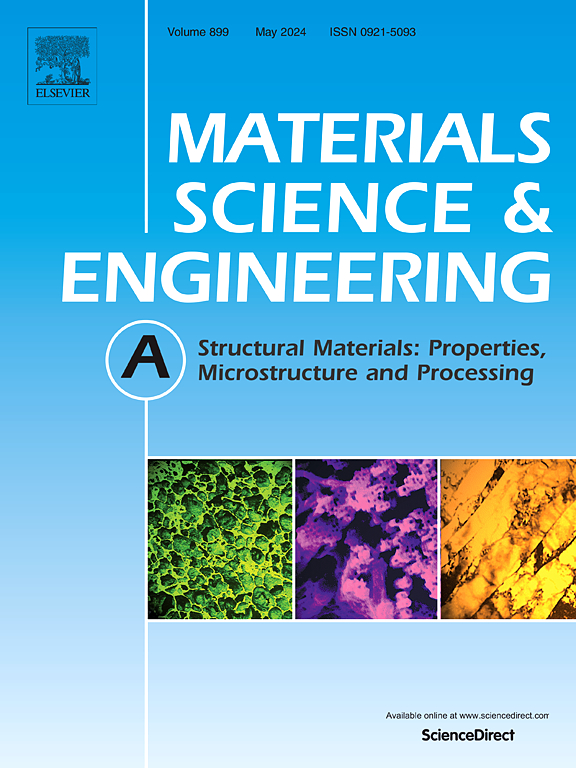Microstructural evolution, bonding mechanism, and fracture behavior of 6061-T4 Al/Q355B steel dissimilar joints fabricated by inertia friction welding
IF 7
2区 材料科学
Q1 MATERIALS SCIENCE, MULTIDISCIPLINARY
引用次数: 0
Abstract
This study explores the inertial friction welding (IFW) of 6061-T4 Al alloy with Q355B steel, with a focus on the evolution of the joint interface microstructure and its influence on mechanical properties. The bonding mechanism and fracture behavior are elucidated as well. The findings reveal the formation of an intermetallic compounds (IMCs) at the weld joint, including Al2Fe, Fe2Al5, Mg-rich Al2O3, and the Al matrix. Uneven distribution of heat, force, and friction states at the welding interface results in heterogeneous distributions of grain size, recrystallization degree, dislocations, and texture. The Brass {011} <211> texture shows a moderate Schmid factor and Taylor factor, whereas the P {011} <122> texture has a high Schmid factor and low Taylor factor. Grain refinement, dislocation motion inhibition, grain boundary strengthening, and the Brass {011} <211> texture enhance the joint performance. Conversely, the build-up of deformed grains, the presence of oxides, and the development of the P {011} <122> texture decrease the joint's ductility. The brittle IMC layers and Mg-rich Al2O3 trigger crack initiation, serving as the primary fracture mechanism. The development of the P {011} <122> texture, coupled with sparse dislocations that initiate and propagate cracks, serves as the secondary fracture mechanism of the joint. The Schmid factor is linked to frictional heat, while the Taylor factor is associated with grain deformation and the formation of IMCs.
惯性摩擦焊接6061-T4 Al/Q355B钢异种接头的组织演变、结合机制及断裂行为
研究了6061-T4铝合金与Q355B钢的惯性摩擦焊接(IFW),重点研究了接头界面组织的演变及其对力学性能的影响。并对其结合机理和断裂行为进行了分析。结果表明,在焊缝处形成了金属间化合物(IMCs),包括Al2Fe、Fe2Al5、富mg的Al2O3和Al基体。焊接界面上热、力和摩擦状态的不均匀分布导致了晶粒尺寸、再结晶程度、位错和织构的不均匀分布。黄铜{011}<;211>;织构具有中等的Schmid因子和Taylor因子,P {011} <122>;纹理具有高施密德因子和低泰勒因子。晶粒细化,位错运动抑制,晶界强化,黄铜{011}<;211>;纹理增强接头性能。相反,变形晶粒的堆积、氧化物的存在和P {011} <;122>;织构降低了接头的延展性。脆性IMC层和富mg Al2O3触发裂纹萌生,是主要断裂机制。P {011} <122>;织构和稀疏位错是接头的次生断裂机制,它们会引发并扩展裂纹。施密德因子与摩擦热有关,而泰勒因子与晶粒变形和imc的形成有关。
本文章由计算机程序翻译,如有差异,请以英文原文为准。
求助全文
约1分钟内获得全文
求助全文
来源期刊

Materials Science and Engineering: A
工程技术-材料科学:综合
CiteScore
11.50
自引率
15.60%
发文量
1811
审稿时长
31 days
期刊介绍:
Materials Science and Engineering A provides an international medium for the publication of theoretical and experimental studies related to the load-bearing capacity of materials as influenced by their basic properties, processing history, microstructure and operating environment. Appropriate submissions to Materials Science and Engineering A should include scientific and/or engineering factors which affect the microstructure - strength relationships of materials and report the changes to mechanical behavior.
 求助内容:
求助内容: 应助结果提醒方式:
应助结果提醒方式:


